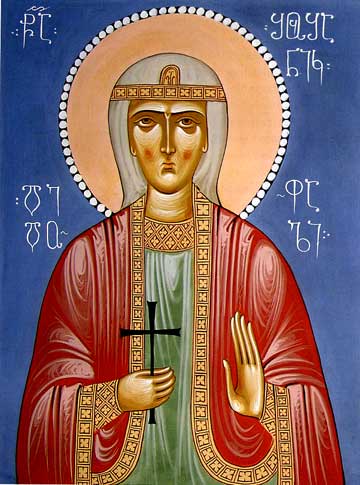- Brahm
- Posts
- Iranic-origin dynasties of the Christian Caucasus
Iranic-origin dynasties of the Christian Caucasus
First on Brown Pundits.

St. Shushanik
The histories of Armenia and Georgia are intricately intertwined with Greater Iran, as evidenced by several dynasties with Iranian origins. Georgia shares a similar historical profile, indicating close ties between the two regions (I won’t even touch on Azerbaijan, which to my mind is simply Russified Iran). With regards to the North Caucasus, notwithstanding Russian ethnic cleansing & genocide (apparently what inspired Dune), there is heavy Persian-Iranian influence (though of course I don’t know nearly enough of the history of the region).
All three of the Great Houses of the Kingdom of Armenia (331 BC to 428 AD) were Iranian origin.
Orontid Dynasty (potential ancestral ties to the Achaemenians): Dating back to the 6th century BCE, the Orontids were influential rulers in ancient Armenia during the Achaemenid Persian Empire’s reign.
Artaxiad Dynasty (descendants of the previous Orontids, the clue is in the Iranian-loaded name Arta): Succeeding the Orontids, the Artaxiads governed the Kingdom of Armenia from the 2nd century BCE to the 1st century CE, overseeing its territorial expansion and cultural flourishing.
Arsacid Dynasty (Armenia): A branch of the Parthian Arsacid dynasty in Iran, the Armenian Arsacids ruled from the 1st to the 4th century CE, with periods of Roman influence interspersed with periods of independence.
There are many other dynasties like the Chosroid, Mihranids, Bagratid (the clues are so obvious in the names) and then even in the Kingdom of Cilician Armenian (the region & inhabitants suffered genocide under the Young Turks) the Rubenid–Hethumid Dynasty had Iranian-links even in the Middle Ages. There is an exotic dynasty, the Mamikonians, who apparently had Chinese-origins but even they intermarried with Iranian nobility eventually.
However, the case of St. Shushanik highlights the tension between Christianity in the Caucasus, with its Eastern roots but “West-facing” orientation, and Iranianism, particularly Zoroastrianism.
Shushanik, also known as Vardandukht, was a Christian Armenian martyr who met a tragic fate at the hands of her husband, Varsken, in Georgia. Despite her resistance to persecution, she was tortured to death for refusing to renounce her Christian faith. Her story, immortalized in Georgian literature, symbolizes the enduring struggle between religious conviction and political power in the region.
